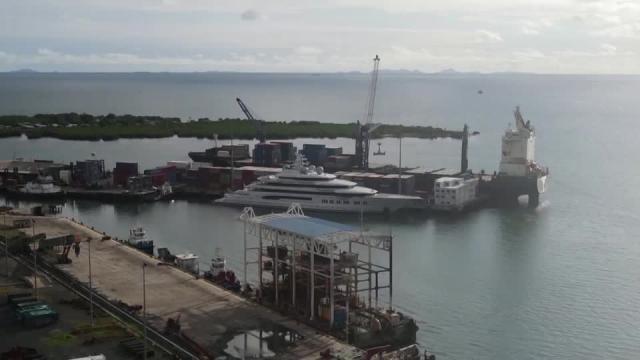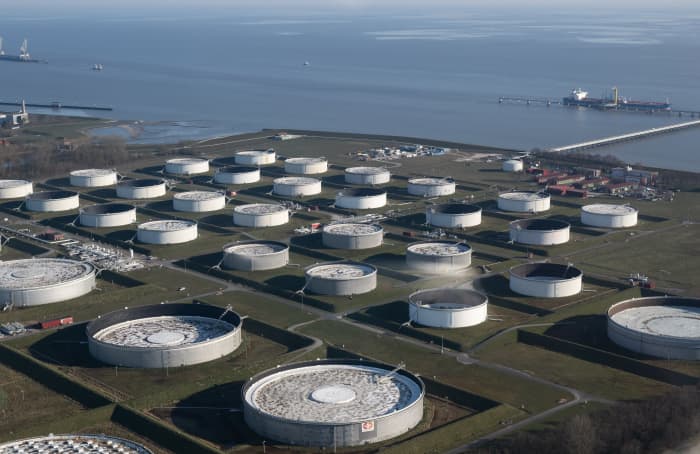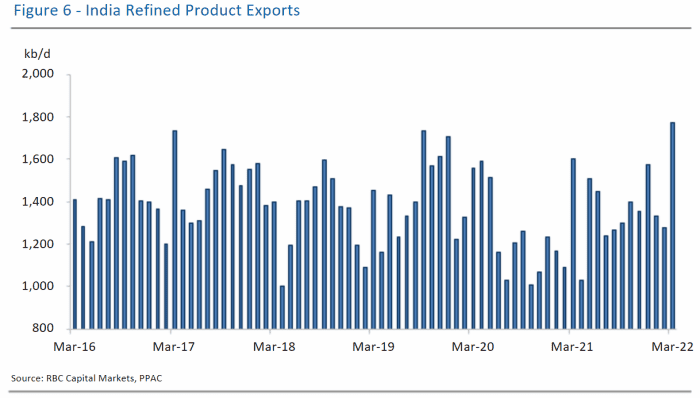Ran Abramitzky and Leah Bouston
Wed, June 1, 2022,

Miami Beach, Florida, Lincoln Road Pedestrian Mall high angle view of city
Miami has one of the highest percentage of immigrants in the U.S. A view of Miami Beach, Lincoln Road Credit - Jeffrey Greenberg-UCG/Universal Images Group
In April 2020, the New York Times ran a special feature called “I Am the Portrait of Downward Mobility.” “It used to be a given that each American generation would do better than the last,” the piece began, “but social mobility has been slowing over time.”
In paging through the profiles, we couldn’t help noticing one group of Americans who defies this trend: the children of immigrants. Sonya Poe was born in a suburb of Dallas, Texas to parents who immigrated from Mexico. “My dad worked for a hotel,” Sonya recalled. “Their goal for us was always: Go to school, go to college, so that you can get a job that doesn’t require you to work late at night, so that you can choose what you get to do and take care of your family. We’re fortunate to be able to do that.”
The dream that propels many immigrants to America’s shores is the possibility of offering a better future for their children. Using millions of records of immigrant families from 1880 to 1940 and then again from 1980 to today, we find that the in past and still today children of immigrants surpass their parents and move up the economic ladder. If this is the American Dream, then immigrants achieve it—big time.
One pattern that is particularly striking in the data is that the children of immigrants raised in households earning below the median income make substantial progress by the time they reach adulthood, both for the Ellis Island generation a century ago and for immigrants today. The children of first-generation immigrants growing up close to the bottom of the income distribution (say, at the 25th percentile) are more likely to reach the middle of the income distribution than are children of similarly poor U.S.-born parents.
What’s more, no matter which country their parents came from, children of immigrants are more likely than the children of the U.S.-born to surpass their parents’ incomes when they are adults. This pattern holds both in the past and today, despite major changes in U.S. immigration policy over the past century, from a regime of nearly open borders for European immigrants in 1900 to one of substantial restrictions in recent decades. Children of immigrants from Mexico and the Dominican Republic today are just as likely to move up from their parents’ circumstances as were children of poor Swedes and Finns a hundred years ago.
Not only does upward mobility define the horizons of people’s lives, but it also has implications for the economy as a whole. Even immigrants who come to the U.S. with few resources or skills bring an asset that is hugely beneficial to the U.S. economy: their children. The rapid success of immigrants’ children more than pays for the debts of their parents.
To conduct our analysis, we needed data that links children to parents. For the historical data, we used historical census records to link sons living in their childhood homes to census data collected 30 years later when these young men had jobs of their own.
Think of us like curious grandchildren searching branches of their family tree online, but a million times over. We started by digging through websites like Ancestry.com that allow the public to search for their relatives. From here, we developed methods to automate these searches so we could follow millions of immigrants and their children in the records.
Our modern data is based on federal income tax records instead. The tax records allow researchers to link children to their parents as tax dependents, and then observe these children in the tax data as adults.
When we compiled this data, what do we see?
The first striking takeaway is that, as a group, children of immigrants achieve more upward mobility than the children of U.S.-born fathers. We focus on the children of white U.S.-born fathers because the children of Black fathers tend to have lower rates of upward mobility. So, the mobility advantage that we observe for the children of immigrants would be even larger if we compared this group to the full population.
The second notable takeaway is that even children of parents from very poor countries like Nigeria and Laos outperform the children of the U.S.-born raised in similar households. The children of immigrants from Central American countries—countries like Guatemala, El Salvador and Nicaragua that are often demonized for contributing to the “crisis” at the southern border—move up faster than the children of the U.S.-born, landing in the middle of the pack (right next to children of immigrants from Canada).
Our third finding is that the mobility advantage of the children of immigrants is just as strong today as it was in the past. What’s more, some of the immigrant groups that politicians accused long ago of having little to contribute to the economy—the Irish, Italians, and Portuguese—actually achieved the highest rates of upward mobility. For the past, we are only able to study sons because we cannot link daughters who change their name at marriage. But in the modern data we can see that this pattern applies to daughters as well.
Today, we might not be that surprised to learn that the children of past European immigrants succeeded. We are used to seeing the descendants of poor European immigrants rise to become members of the business and cultural elite. Many prominent leaders, including politicians like President Biden, regularly emphasize pride in their Irish or Italian heritage. But, at the time, these groups were considered the poorest of the poor. In their flight from famine, Irish immigrants are not too dissimilar from immigrants who flee hurricanes, earthquakes, and violent uprisings today.
We often hear concerns about how poor immigrants will fare and whether their children will get trapped in low-paying jobs or dependent on government support. But our data sleuthing should lay these fears to rest. The children of immigrants do typically make it in America. And it most often takes them only one generation to rise up from poverty.
One question that arises with our work is: what about children who arrive without papers? Undocumented children face more barriers to mobility than other children of immigrants. Fortunately, this group is relatively small even in recent years: only 1.5 million (or five percent) of the 32 million children of immigrant parents are undocumented today. Indeed, this number is small because many children of undocumented immigrants are born in the U.S. and thus are granted citizenship at birth.
The children in our data from countries like Mexico and El Salvador are those whose parents benefited from an earlier legalization effort in the mid-1980s. They are doing remarkably well now, and we believe that their counterparts today have this potential, as well. Children who arrive in the U.S. without papers face barriers to mobility—and not because they put in any less effort, but because they encounter obstacles all along their path. With a stroke of a pen, politicians can make that happen but, so far, this legislation has remained out of reach.
What enables the children of immigrants to escape poor circumstances and move up the economic ladder? The answer we hear most often is that immigrants have a better work ethic than the US-born and that immigrant parents put more emphasis on education.
We agree that the special features of immigrant families could be part of the story (although it’s hard to tell in our data). Yet when we crunched the numbers we found something surprising: immigrants tend to move to those locations in the U.S. that offer the best opportunities for upward mobility for their kids, whereas the U.S.-born are more rooted in place.
Generations of social science research has confirmed that where children grow up influences their opportunities in life. We find that immigrant parents are more likely than U.S.-born parents to settle in these high-opportunity areas, which are flush with good jobs and offer better prospects for mobility in the next generation. As striking proof that geography matters, we see that children of immigrants out-earn other children in a broad national comparison, but they do not earn more than other children who grew up in the same area. In terms of economic fortunes, the grown children of immigrants look similar to the children of U.S.-born parents who were raised down the block, or in the same town. This pattern implies that the primary difference between immigrant families and the families of the U.S.-born is in where they choose to live.
One implication of our findings is that it is very likely that U.S.-born families would have achieved the same success had they moved to such high-opportunity places themselves. In fact, we find that the children of U.S.-born parents who moved from one state to another have higher upward mobility than those who stayed put: their level of upward mobility is closer to (but not quite as high as) that of the children of immigrants who moved from abroad. So, you might ask: why don’t US-born families move out of a region when job opportunities dwindle?
Ironically, J.D. Vance (who is now running for Senate in Ohio on an anti-immigration platform) poses this question in his bestseller Hillbilly Elegy,aboutgrowing up in Middletown, Ohio, only 45 minutes from the border with Kentucky, the state where his family had lived for generations. For Vance, moving up the ladder meant moving out of his childhood community, a step that many Americans are unwilling to take. He went on to enlist in the Marines, and then to Ohio State and Yale Law School—“Though we sing the praises of social mobility,” he writes, “it has its downsides. The term necessarily implies a sort of movement—to a theoretically better life, yes, but also away from something.”
Vance is hitting on the cost of attaining upward mobility for children of U.S.-born parents. Many of the children of U.S.-born parents grow up in areas where their families settled long before, so economic mobility for them is often coupled with the costs of leaving home. By contrast, immigrants already took the step of leaving home to move to America, so they may be more willing to go wherever it takes within the country to find opportunity. In other words, U.S.-born families are more rooted in place, while immigrant families are more footloose—and this willingness to move toward opportunity seems to make all the difference.
Adapted from Abramitzky and Boustan’s new book Streets of Gold: America’s Untold Story of Immigrant Success



















